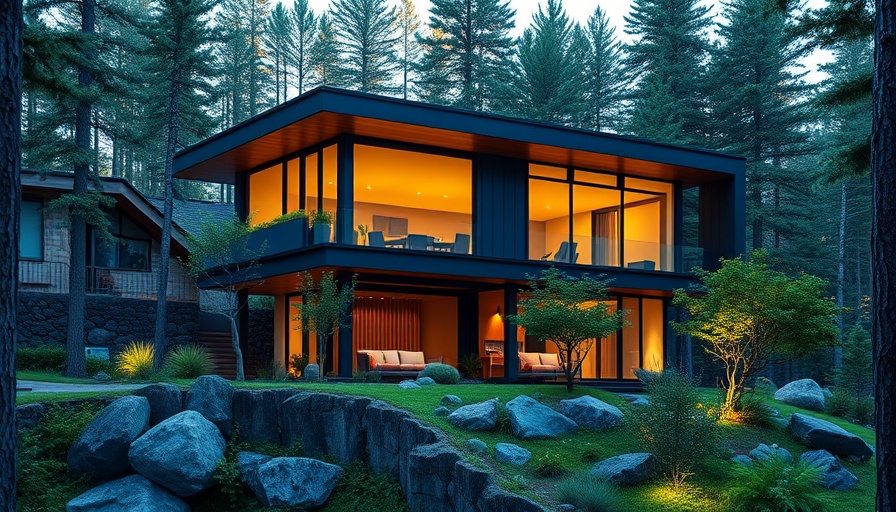
Embracing the Future: Architecture in 2025
As we journey into 2025, contemporary architecture is breaking new ground, reflecting a fundamental shift in how we interact with our built environment. Gone are the days when aesthetic appeal alone dictated architectural design; today, functionality, sustainability, and community connection play pivotal roles. Whether you're eyeing a modern home in Maryland or curious about broader trends, understanding these architectural movements is key to creating healthier living spaces.
Climate-Responsive Design: A Necessity, Not a Choice
With climate change pressing down on us harder than ever, architects are embracing climate-responsive design as standard practice. This approach incorporates passive heating and cooling techniques, optimizing thermal insulation and tailoring building materials to local weather conditions. In Maryland, where humidity and seasonal changes can be harsh, incorporating these principles can significantly enhance comfort and reduce energy costs. Imagine living in a home designed to naturally maintain the perfect temperature, reducing reliance on energy-consuming systems.
Authentic Sustainability: The New Standard
Sustainability has evolved beyond mere buzzwords. The modern approach to architecture focuses on a full lifecycle: from the materials used to energy consumption, maintenance, and disassembly. In Maryland, architects are increasingly prioritizing recycled steel, reclaimed wood, and low-carbon concrete. This shift not only minimizes environmental impact but also aligns with the growing expectation of carbon neutrality in both residential and commercial projects. As homebuyers, supporting sustainable practices can lead to healthier living environments that harmoniously coexist with nature.
The Role of Technology: Fostering Real-Time Innovation
In the age of technology, tools like Building Information Modeling (BIM) are transforming how architects visualize and execute projects. As these innovations become commonplace, they facilitate better collaboration and efficiency. Imagine visiting a home designed with augmented reality, allowing you to walk through your future living space before it's built. In Maryland, this means more personalized and effective home design that resonates with your unique lifestyle and preferences.
Adaptive Reuse: Honoring the Past While Creating the Future
Adaptive reuse is a growing trend where architects breathe new life into existing structures, valuing historical context and integrating modern functionality. As cities like Baltimore and Annapolis evolve, repurposing factories into vibrant homes or co-working spaces reflects a mindset of respect for heritage while addressing modern needs. This approach not only preserves local history but also champions sustainability by reducing the necessity of new materials.
Indoor-Outdoor Fluidity: Nature at Your Doorstep
The boundary between indoor and outdoor living continues to blur, creating harmonious living spaces. Today's contemporary homes feature expansive sliding doors, open courtyards, and rooftop gardens, inviting the Maryland landscape inside. This integration promotes a healthier lifestyle by encouraging outdoor activities and enabling residents to connect with nature without leaving their premises. Imagine having a morning coffee on a green roof or hosting friends in a sunny courtyard, all while surrounded by the beauty of your home environment.
Local Perspectives: Maryland's Unique Architectural Trends
In Maryland, the architectural landscape is uniquely shaped by local climate, culture, and community values. As these trends take root, there is an opportunity to support builders and designers who prioritize health, sustainability, and innovation. For those in Maryland considering a new home or renovation, aligning with these contemporary trends will ensure not only a beautiful space but also one that contributes positively to your health and well-being.
As we look ahead, the architecture of 2025 promises to create environments that are not just aesthetically pleasing but also responsible and responsive to the lives we lead. By engaging with these contemporary trends, we can contribute to a healthier and more sustainable future for our communities. Start thinking about how you can implement these concepts in your own living space to enhance your quality of life.
 Add Row
Add Row 
 Add Element
Add Element 


Write A Comment